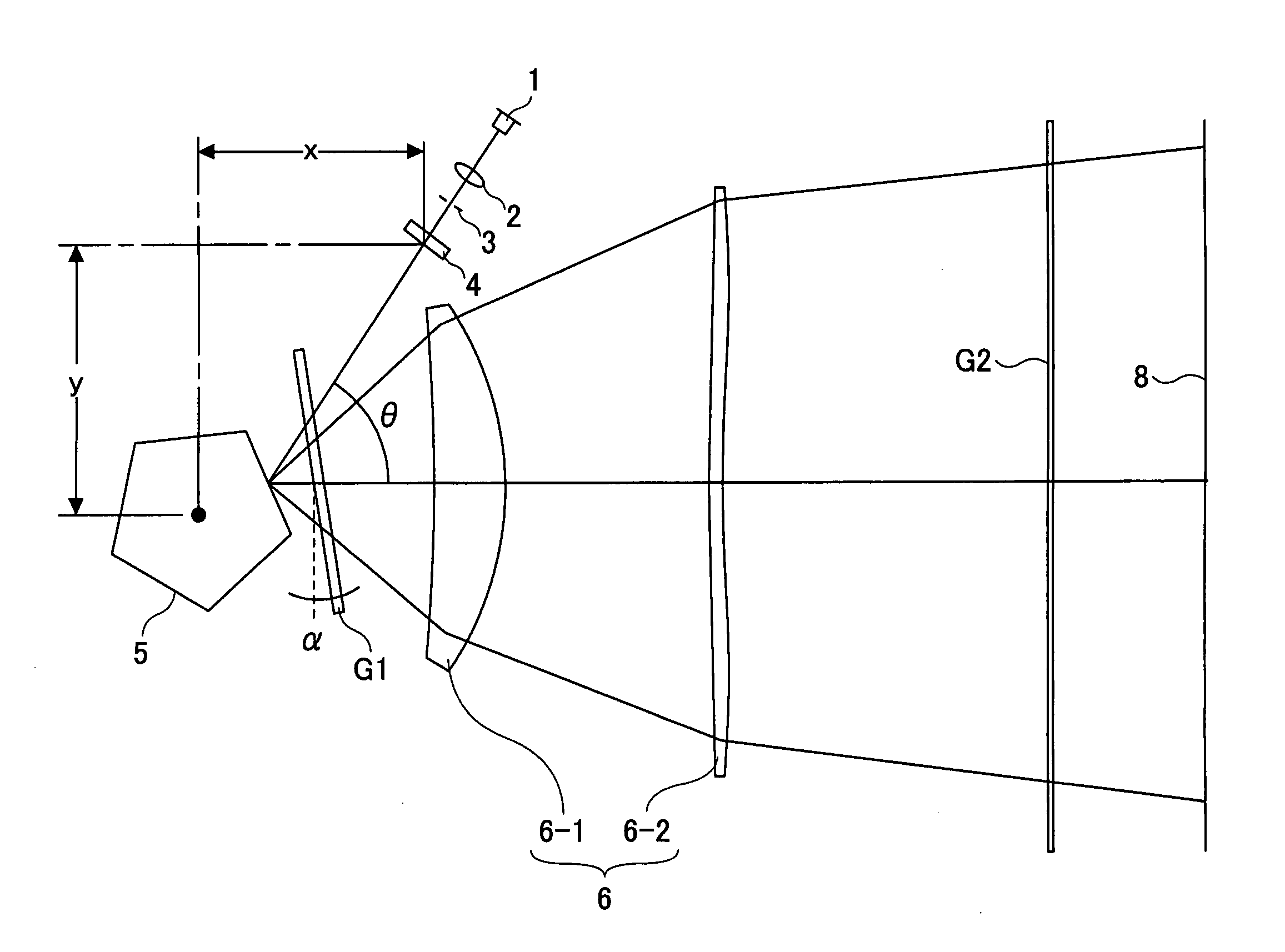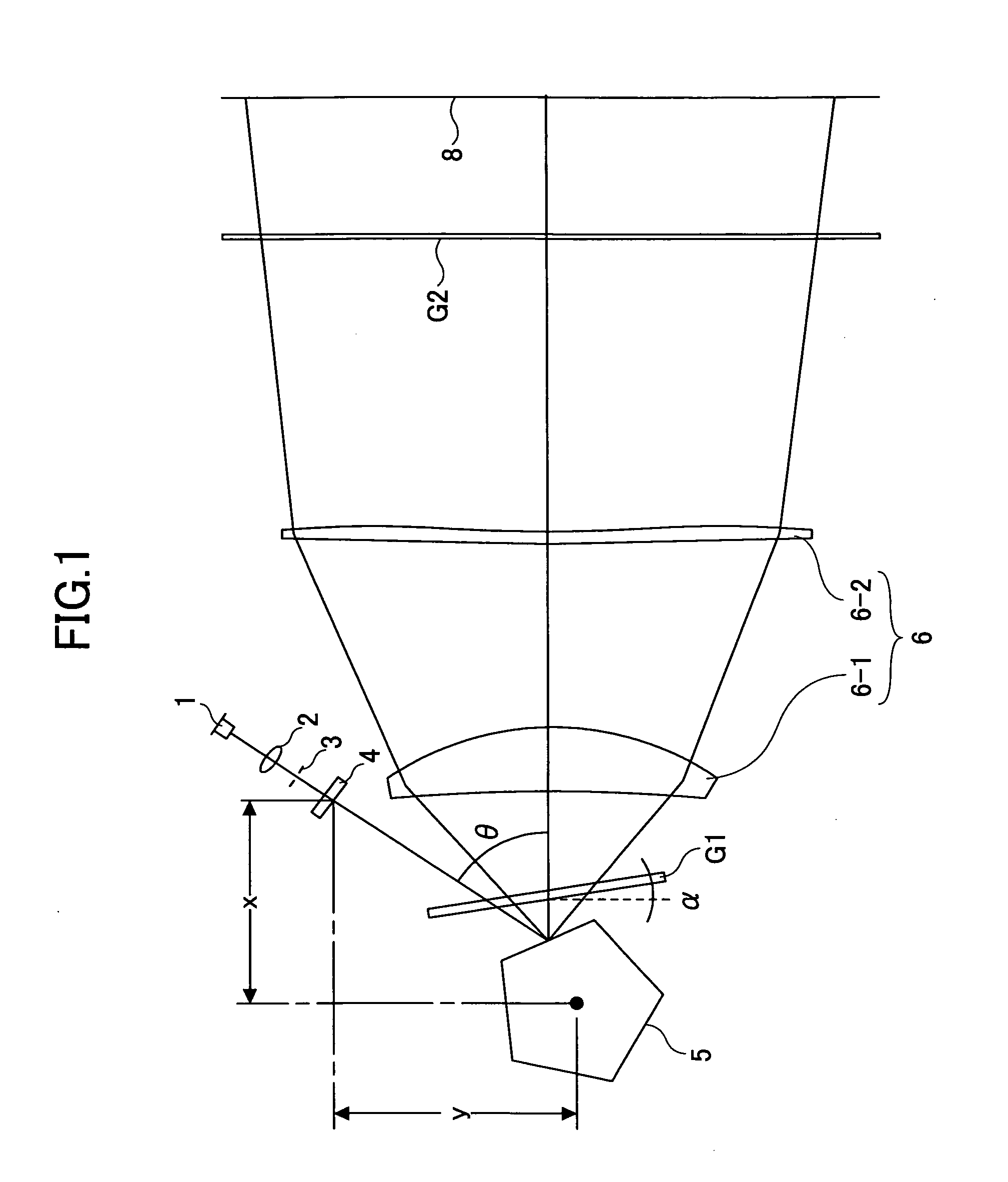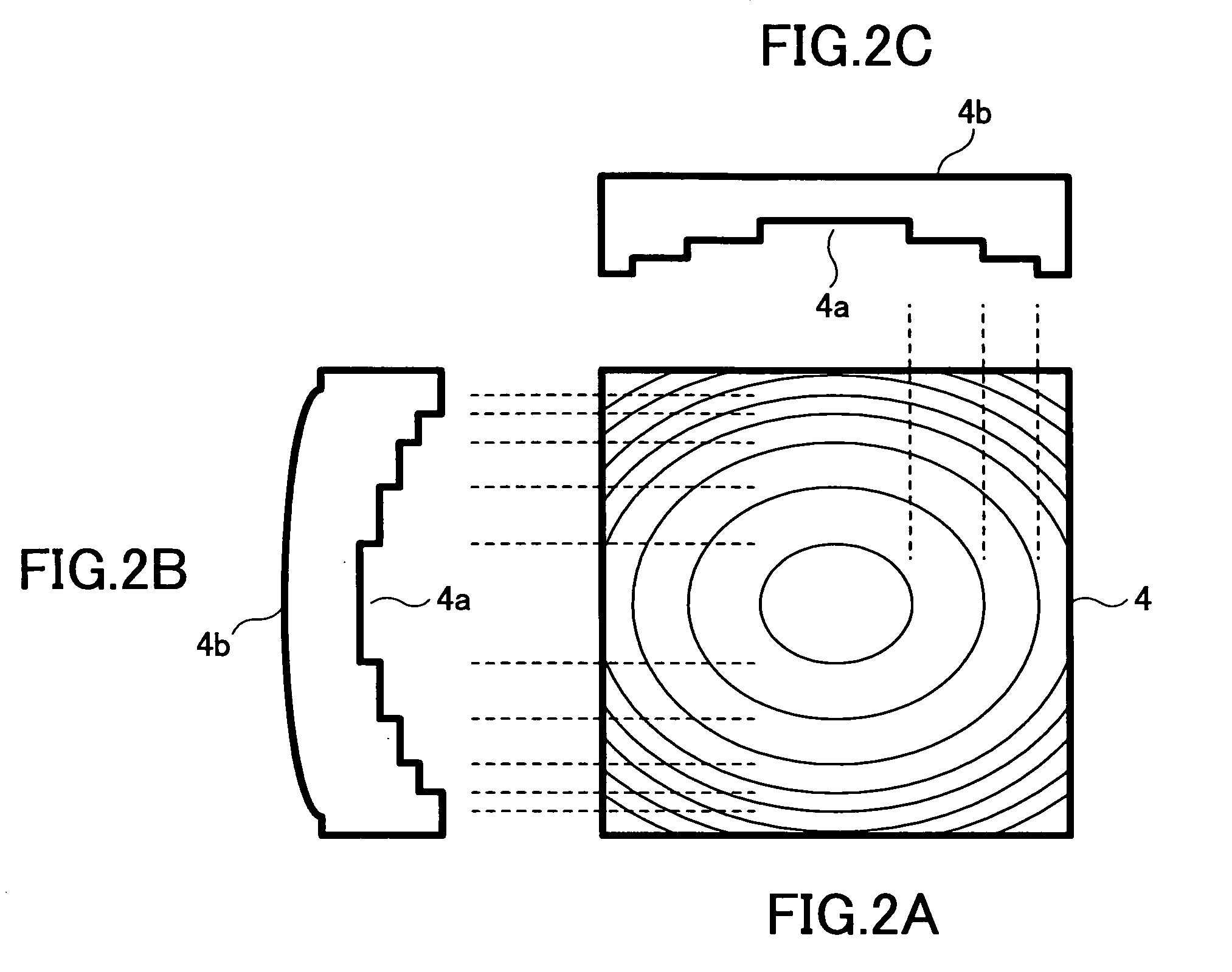Optical scanning apparatus, and image forming apparatus
a scanning apparatus and image technology, applied in the field of optical scanning apparatuses, can solve the problems of changing the lens is subject to ambient changes, and the beam spot size on the scanned surface changes, so as to reduce the variation in the beam spot size and stable the effect of the beam spot siz
- Summary
- Abstract
- Description
- Claims
- Application Information
AI Technical Summary
Benefits of technology
Problems solved by technology
Method used
Image
Examples
example 1
[0135]The semiconductor laser 1 and the coupling lens 2 are fixedly retained on a retaining member with a linear coefficient of expansion of 1.0×10−5.
[0136]The coefficients of the diffracting surface of the anamorphic optical element 4 are such that Cy=2.95×10−3 and Cz=1.747×10−2.
[0137]The amount of change in the beam waist position at 45° C. with respect to the reference temperature of 25° C. is as follows:
[0138]Main scan direction: −0.03 mm
[0139]Sub-scan direction: −0.13 mm
[0140]Thus, it can be seen that satisfactory corrections are made in both the main scan direction and the sub-scan direction. The ellipticity is 0.169, so that the diffracting surface can be processed relatively easily.
[0141]Such processability leads to an enhanced accuracy in the diffracting surface and contributes to the maintenance of quality of the diffracting function.
[0142]The inventive concept of increasing the ellipticity of an elliptical shape on a diffracting surface may be applied regardless of the ma...
example 2
[0152]The semiconductor laser 1 and the coupling lens 2 are fixedly retained on a retaining member with a linear coefficient of expansion of 5.0×10−6.
[0153]The coefficients of the diffracting surface of the anamorphic optical element 4 are such that Cy=3.38×10−3 and Cz=1.758×10−2.
[0154]The amount of the beam waist position change at 45° C. with respect to the reference temperature of 25° C. is as follows:
[0155]Main scan direction: −0.03 mm
[0156]Sub-scan direction: 0.1 mm
[0157]Thus, it can be seen that satisfactory corrections are made in both the main scan direction and the sub-scan direction. The ellipticity in this case is 0.192, so that processing is easier than in the case of Example 1.
example 3
[0158]The ellipticity can be increased merely by making the coupling lens with resin.
[0159]Specifically, in this example, resin 1 shown in Table 1 is used as the material for the coupling lens. The coupling lens is disposed such that its front principal point is located 35.06 mm away from the light-emitting portion of the semiconductor laser 1, so that a collimating action is obtained at the focal distance of 35.06 mm. The semiconductor laser 1 and the coupling lens 2 are fixedly retained on a retaining member with a linear coefficient of expansion of 5.0×10−5.
[0160]The coefficients of the diffracting surface of the anamorphic optical element 4 are such that Cy=7.8×10−3 and Cz=1.55×10−2.
[0161]The amount of the beam waist position change at 45° C. with respect to the reference temperature of 25° C. is as follows:
[0162]Main scan direction: 0.02 mm
[0163]Sub-scan direction: 0.1 mm
[0164]Thus, it can be seen that satisfactory corrections are made in both the main scan direction and the su...
PUM
 Login to View More
Login to View More Abstract
Description
Claims
Application Information
 Login to View More
Login to View More - R&D
- Intellectual Property
- Life Sciences
- Materials
- Tech Scout
- Unparalleled Data Quality
- Higher Quality Content
- 60% Fewer Hallucinations
Browse by: Latest US Patents, China's latest patents, Technical Efficacy Thesaurus, Application Domain, Technology Topic, Popular Technical Reports.
© 2025 PatSnap. All rights reserved.Legal|Privacy policy|Modern Slavery Act Transparency Statement|Sitemap|About US| Contact US: help@patsnap.com



